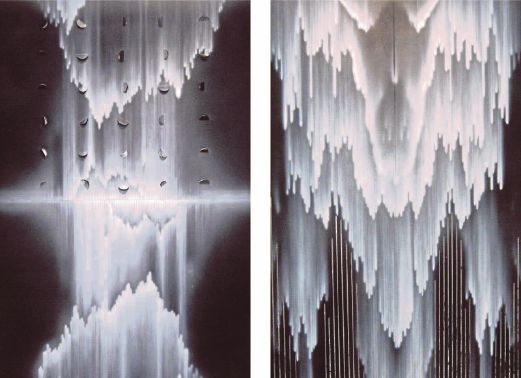Rajinder Singh’s introspections on the stark and beautiful results in an explicit process both instinctive and systematic, writes Sarah NH Vogeler
MATHEMATICS is stunning; intellectually sophisticated, complexly ascetic and really quite beautiful to look at. Marry these elements with art, and the union consequences in an almost enchanted, twisted, intertwining strokes, as evidenced in Rajinder Singh’s recently concluded show, “...the ceiling floats away with a sigh...” at Wei-Ling Contemporary Gallery at The Gardens Mall, KL. There is a swiftness and delicacy in the whirling and intersecting of lines, leaving audiences to interpret the cyphers, or rather, as the artist deadpans, “I want it to have a jarring effect on people.”
Working full time as an artist out of his studios in West London and Dublin, his background in mathematics is the motivating power underlying all his works. “...the ceiling floats away with a sigh...” epitomises works four years in the making; works which according to the artist, has been stripped down to its humblest forms, a kind of mining, he says, of a crux, of an essence.
The pieces shown are both carved-like and meticulously styled, architectural-influenced monochromatic works of the deepest blacks and pristine whites of raw physicality, asymmetrical strokes of both vertical and horizontal rudiments. These are works which are at times delightfully chaotic, but always classily rendered.
His processes, of techniques and utilising specific materials, is certainly arresting. It’s mathematics and arbitrary forms in an intense probe aimed to “disturb” the viewer. In his studios, Rajinder assembles a large spray booth, and along with a large compressor, formulates his acetate, (a prevailing occurrence in his works) and builds layers of paint which can take from days to weeks in order to realise the perfect surface to work with.
He then proceeds with adding and eliminating paint — a method he christens as “sculpting the plastic”.
Synthetic materials have always featured prominently in the artist’s creations. Canvas eventually abjured in favour of vinyl, and in recent years, polyester fabric became a firm staple. But his passion for mathematics, however, remains pivotal, his raison d’etre — the love for numbers inherited from his father, and also from his own academic training.
An excerpt from his catalogue essay, written by Rachel Jena, reads: “I am still defined by my background and interest in mathematics. This is manifested today in the questions that I respond to through my art. I am interested in that which is the opposite of the study and the mores of mathematics which defines the field.
“I am interested in the gap we presume to exist between the study of numbers and the making of art... Mathematics, though, scares people. It gives them a headache. It makes them turn away. But it is also a fertile field for investigating that which is without. And this is what interests me just now.”
Rajinder’s personal life has greatly impacted his works recently — the birth of his second child and the demise of a close friend.
His works invoke a myriad of reactions, from sighs of pleasures at the cascading waterfalls, to a heady and exciting sensation at landscapes which glimmer and sparkle even with the absence of colours. Or perhaps, it is these absences which makes for such gripping impact.






